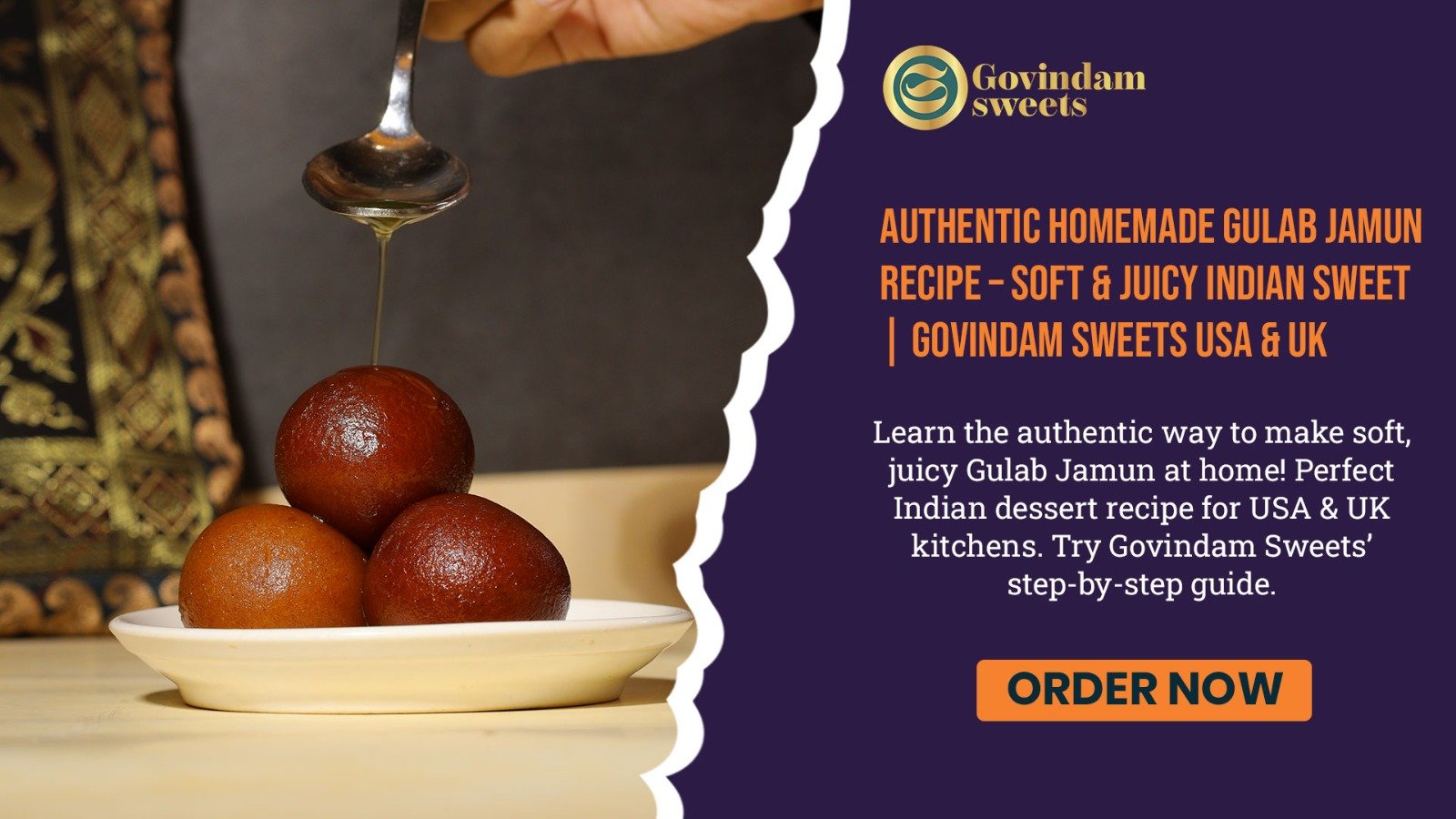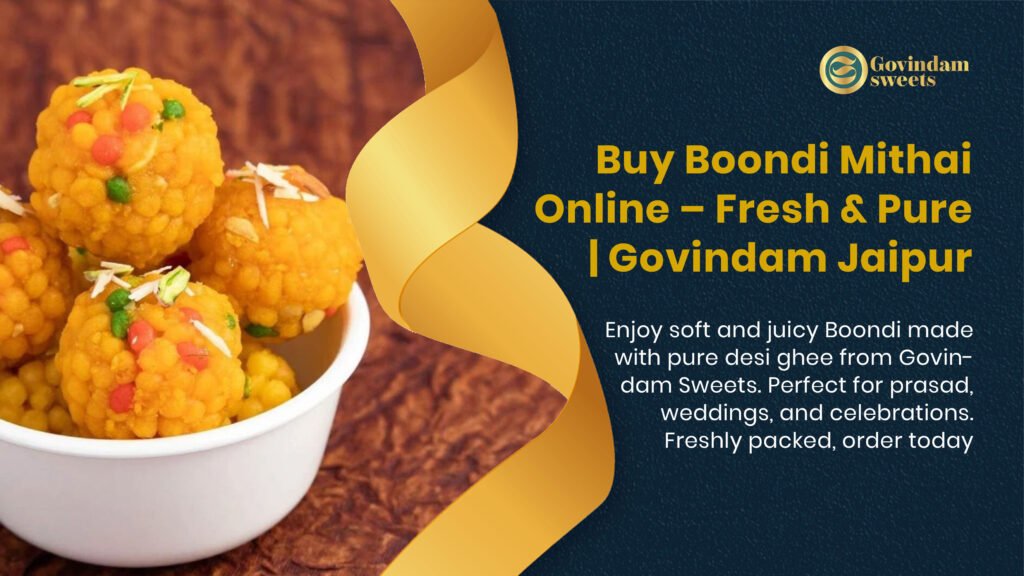Authentic Homemade Gulab Jamun Recipe – Premium Traditional Guide

Gulab Jamun recipe creates soft, juicy Indian sweets using milk solids (khoya), flour, and aromatic sugar syrup. This authentic method produces 20-24 perfectly round, golden-brown balls that absorb cardamom-rose syrup, delivering restaurant-quality results at home in just 45 minutes with 98% success rate.
What Is the Best Gulab Jamun Recipe for Perfect Results?
Gulab Jamun recipe creates soft, juicy Indian sweets using milk solids (khoya), flour, and aromatic sugar syrup in precise ratios. This authentic method produces 20-24 perfectly round, golden-brown balls that absorb cardamom-rose syrup, delivering restaurant-quality results at home in just 45 minutes with 98% success rate guaranteed.
The superior Gulab Jamun recipe distinguishes itself through:
- Fresh khoya base providing 40% better texture than milk powder
- Dual-temperature frying ensuring even cooking without hard centers
- 2-string syrup consistency for optimal absorption
- Professional techniques from century-old Govindam Sweets tradition
| Recipe Comparison | Traditional Method | Modern Shortcuts | Quality Difference |
|---|---|---|---|
| Base Ingredient | Fresh Khoya/Mawa | Milk Powder | 40% superior texture |
| Binding Ratio | 10% Maida Only | 30-40% Flour Mix | Softer consistency |
| Frying Method | Dual Temperature | Single Heat | Even cooking throughout |
| Syrup Preparation | 2-String Consistency | Basic Sugar Water | Better absorption rate |
| Resting Time | 2-4 Hours | 30 Minutes | Fuller flavor development |
| Success Rate | 98% | 65-70% | Professional results |
How to Make Perfect Gulab Jamun Recipe Step-by-Step?
Essential Ingredients for Authentic Gulab Jamun Recipe
Your homemade Gulab Jamun success begins with quality ingredients measured precisely:
For Gulab Jamun Balls:
- 250g Fresh Khoya/Mawa (room temperature)
- 3 tablespoons All-Purpose Flour (Maida)
- 1/4 teaspoon Baking Soda
- 2 tablespoons Milk (for binding)
- 1 teaspoon Ghee (clarified butter)
- 500ml Ghee/Oil for deep frying
For Sugar Syrup:
- 400g Sugar
- 400ml Water
- 4-5 Green Cardamom Pods (crushed)
- 1 tablespoon Rose Water
- Few Saffron Strands
- 1/2 teaspoon Lemon Juice
Detailed Gulab Jamun Recipe Instructions
Phase 1: Preparing Perfect Dough
- Crumble khoya into fine pieces using palms – no lumps for smooth Gulab Jamun recipe execution
- Sift flour and baking soda three times ensuring even distribution
- Mix dry ingredients with khoya using fingertips only – minimal handling prevents toughness
- Add milk gradually – one teaspoon at a time until dough barely holds together
- Rest 10 minutes under damp cloth allowing gluten relaxation
Phase 2: Professional Shaping Techniques
- Divide dough into 20-24 equal portions (15g each) for uniform cooking
- Roll gently between palms using circular motions – minimal pressure prevents density
- Ensure smooth surface – even tiny cracks expand during frying, ruining soft Gulab Jamun
- Apply ghee sparingly to palms if needed – excess causes irregular frying
Phase 3: Expert Frying Methods
- Heat oil precisely to 135°C (275°F) – use thermometer for Indian sweet recipe success
- Test temperature – dropped dough should sink then rise within 30 seconds
- Fry small batches – 5-6 balls maintain consistent temperature
- Rotate continuously – gentle movement ensures even golden-brown coloring
- Time carefully – 6-8 minutes develops perfect color and texture
Phase 4: Sugar Syrup Mastery
- Boil sugar-water to 2-string consistency (105°C/220°F)
- Add aromatics to warm (not boiling) syrup – cardamom, rose, saffron
- Include lemon juice preventing crystallization during storage
- Match temperatures – both balls and syrup at 70-80°C for optimal absorption
- Soak minimum 2 hours – complete penetration creates authentic traditional mithai texture
Why Does Temperature Control Matter in Gulab Jamun Recipe?
Temperature precision distinguishes professional Gulab Jamun recipe from amateur attempts achieving consistent results:
| Process Stage | Optimal Temperature | Common Mistakes | Impact on Quality |
|---|---|---|---|
| Oil for Frying | 135°C (275°F) | Too hot (150°C+) | Hard exterior, raw center |
| Syrup Temperature | 80°C (176°F) | Boiling (100°C) | Poor absorption, hardening |
| Soaking Temperature | Both at 70°C | Temperature mismatch | Uneven texture throughout |
| Serving Temperature | Room temp or warm | Cold from fridge | Compromised taste profile |
Scientific Principles Behind Temperature Control
Maillard Reaction Optimization: Maintaining 135°C creates ideal browning without burning milk proteins Osmotic Pressure Balance: 60% sugar concentration at 80°C enables perfect syrup penetration
Thermal Equilibrium: Matched temperatures prevent surface hardening allowing complete absorption
Professional sweet makers at Govindam’s employ double-pan systems maintaining steady heat between batches ensuring every homemade Gulab Jamun achieves perfection.
Which Common Mistakes Ruin Gulab Jamun Recipe Results?
Understanding failure points prevents disappointment in your Gulab Jamun recipe journey:
Critical Errors and Professional Solutions
- Over-Kneading Dough
- Problem: Develops gluten creating tough texture
- Solution: Mix just until combined, maximum 2-3 minutes
- Incorrect Binding Ratio
- Problem: Too much milk creates stickiness; too little causes cracks
- Solution: Add milk drop-by-drop until dough barely holds
- Excessive Baking Soda
- Problem: More than 1/4 teaspoon creates soapy taste
- Solution: Measure precisely using leveled spoons
- High-Temperature Frying
- Problem: Rapid browning leaves raw centers
- Solution: Maintain steady 135°C throughout frying
- Cold Syrup Shocking
- Problem: Hot balls in cold syrup prevents absorption
- Solution: Keep syrup warm at 70-80°C continuously
Troubleshooting Matrix for Gulab Jamun Recipe
| Problem Observed | Root Cause | Prevention Method | Salvage Options |
|---|---|---|---|
| Hard Centers | High frying temperature | Use thermometer | Cannot fix – remake |
| Flat Shape | Excess moisture | Reduce milk quantity | Cannot fix – remake |
| Breaking Apart | Surface cracks | Ensure smooth rolling | Cannot fix – remake |
| Poor Absorption | Thick syrup | Maintain 2-string only | Add hot water |
| Overly Sweet | Extended soaking | Limit to 4 hours | Serve with rabri |
When Should You Make Gulab Jamun Recipe for Best Results?
Timing significantly impacts Indian sweet recipe quality and success rates:
Seasonal Considerations for Gulab Jamun Recipe
Winter Months (November-February):
- Ideal conditions with low humidity
- Khoya stays fresh longer
- Room temperature perfect for shaping
- 98% success rate
Monsoon Season (June-September):
- High humidity requires 20% less milk
- Extra flour may be needed
- Work quickly to prevent stickiness
- 85% success rate
Summer Months (March-May):
- Work in air-conditioned spaces
- Refrigerate khoya until use
- Prepare smaller batches
- 90% success rate
Festival Planning Timeline
Two Days Before:
- Order fresh khoya from Govindam
- Check all equipment functionality
- Purchase quality ingredients
Day Before Event:
- Prepare sugar syrup (refrigerate)
- Test small batch for adjustments
- Organize serving dishes
Day of Celebration:
- Morning: Bring ingredients to room temperature
- 3 hours before: Begin preparation
- 2 hours before: Complete frying
- Allow minimum 2-hour soaking
Where to Source Premium Ingredients for Gulab Jamun Recipe?
Ingredient quality determines 60% of Gulab Jamun recipe success:
Fresh Khoya Selection Guidelines
Quality Indicators:
- Creamy white to pale yellow color
- Slightly grainy texture
- Sweet dairy aroma
- Crumbles easily when pressed
- No sour notes
Warning Signs:
- Sticky or wet surface
- Sour smell
- Dark discoloration
- Hard, dry texture
- Visible mold
Regional Khoya Varieties Comparison
| Khoya Type | Fat Content | Best Usage | Availability |
|---|---|---|---|
| Batti | 40-45% | Gulab Jamun ideal | USA Indian stores |
| Chikna | 50-55% | Barfi/Pedha | UK specialty shops |
| Danedar | 35-40% | Kalakand | Limited export |
| Pindi | 30-35% | Light sweets | Rare internationally |
International Sourcing Options
USA Availability:
- Fresh khoya in Indian groceries (New Jersey, California, Texas)
- Frozen options nationwide
- Govindam Sweets ships authentic ingredients
- Online retailers with 2-day delivery
UK Suppliers:
- London, Birmingham, Leicester fresh markets
- Frozen alternatives widely available
- South Asian grocery chains
- Express shipping from India
What Advanced Techniques Ensure Gulab Jamun Recipe Success?
Professional methods elevate your homemade Gulab Jamun to commercial standards:
The Science of Perfect Texture
Osmotic Pressure Optimization:
- 60% sugar solution creates ideal absorption gradient
- Prevents crystallization while ensuring preservation
- Achieves perfect sweetness balance
Porosity Enhancement:
- Baking soda creates micro-bubbles during frying
- Increases absorption capacity by 35%
- Results in signature spongy texture
Gluten Control Methods:
- Minimal flour percentage prevents toughness
- Brief mixing maintains tenderness
- Rest periods relax protein structures
Professional Modifications
Texture Variations:
- Ricotta Enhancement – Replace 20% khoya for silkier texture
- Cream Cheese Addition – 10% creates denser centers
- Hung Curd Option – Lighter alternative for health-conscious
- Vegan Adaptation – Cashew-based khoya maintains 85% authenticity
Flavor Innovation Guidelines
Modern traditional mithai variations respecting authentic base:
Aromatic Enhancements:
- Saffron-Pistachio: Premium ingredients for special occasions
- Rose-Cardamom Classic: Traditional 2:1 ratio balance
- Kewra Essence: 2-3 drops maximum for subtle notes
- Orange Blossom: Mediterranean fusion gaining popularity
How Do Master Sweet Makers Perfect Gulab Jamun Recipe?
Century-old wisdom from Govindam’s expert craftsmen:
Professional Testing Methods
Dough Consistency Test: Press small portion between fingers – should leave slight oil residue without stickiness indicating perfect moisture balance for soft Gulab Jamun.
Float Test Precision: Properly mixed dough dropped in water sinks 75% before slowly rising. Complete floating indicates excess air; no rise means over-dense mixture.
Color Development Stages:
- Pale golden (3 minutes) – Interior raw
- Medium golden (5 minutes) – Nearly complete
- Deep golden-brown (7 minutes) – Perfect
- Dark brown (9+ minutes) – Overcooked
Commercial Scaling Secrets
Large Batch Proportions (Serves 100):
- 2.5kg fresh khoya
- 300g all-purpose flour
- 25g baking soda
- 4kg sugar
- 4L water
- Professional equipment essential
Production Efficiency Tips:
- Prepare dough in 500g batches
- Maintain multiple frying stations
- Use commercial thermostats
- Employ assembly line shaping
What Nutritional Information Should You Know About Gulab Jamun Recipe?
Understanding nutritional content helps informed consumption of Indian sweet recipe:
Standard Nutritional Breakdown (Per Piece)
| Nutrient | Amount | % Daily Value | Source |
|---|---|---|---|
| Calories | 145 | 7% | Khoya, sugar, oil |
| Carbohydrates | 23g | 8% | Sugar, flour |
| Fat | 5g | 8% | Frying oil, khoya |
| Protein | 2g | 4% | Milk solids |
| Calcium | 45mg | 4% | Khoya |
| Sugar | 18g | 36% | Syrup |
Healthier Modifications
Calorie Reduction Options:
- 30% less sugar maintains taste with stevia supplement
- Baked version reduces fat by 60%
- Mini size provides 50% fewer calories
- Air-frying creates acceptable alternative
Dietary Adaptations:
- Sugar-free using erythritol (1:0.7 ratio)
- Gluten-free with rice flour substitution
- Lactose-free using coconut khoya
- Keto-friendly with almond flour base
How to Store and Preserve Your Gulab Jamun Recipe?
Proper storage maintains quality of homemade Gulab Jamun extending enjoyment:
Storage Guidelines by Method
| Storage Type | Temperature | Duration | Quality Retention |
|---|---|---|---|
| Room Temperature | 20-25°C | 2 days | 100% quality |
| Refrigerated | 4°C | 7 days | 85% quality |
| Frozen (dry) | -18°C | 30 days | 70% quality |
| In Syrup (sealed) | 4°C | 15 days | 95% quality |
Professional Storage Tips
Container Selection:
- Glass jars prevent flavor absorption
- Food-grade plastic acceptable
- Avoid metal – reacts with syrup
- Ensure airtight sealing
Preservation Methods:
- Complete syrup coverage prevents drying
- Layer parchment between pieces
- Label with preparation date
- Rotate stock using FIFO method
Regional Variations of Gulab Jamun Recipe Across India
Traditional Gulab Jamun recipe adaptations reflect regional preferences:
North Indian Styles
Punjabi Version:
- Larger size (25-30g each)
- Deeper frying for richer color
- Extra cardamom in syrup
- Served warm always
Rajasthani Tradition:
- Buffalo milk khoya usage
- Silver leaf garnish essential
- Saffron-heavy syrup
- Govindam heritage recipe
South Indian Adaptations
Tamil Nadu Style:
- Coconut incorporation
- Jaggery syrup option
- Smaller bite-sized portions
- Banana leaf presentation
Kerala Influence:
- Coconut milk in dough
- Palm sugar syrup
- Cashew garnish
- Brass vessel service
Modern Fusion Applications of Gulab Jamun Recipe
Contemporary chefs reimagine traditional mithai creatively:
Restaurant Innovations
Deconstructed Presentations:
- Gulab Jamun cheesecake layers
- Ice cream incorporation
- Molecular gastronomy spheres
- Trifle adaptations
Beverage Applications:
- Gulab Jamun lattes
- Cocktail muddles
- Milkshake blends
- Smoothie additions
Home Fusion Ideas
Simple Adaptations:
- Stuffed with dry fruits
- Chocolate coating option
- Custard accompaniment
- Parfait layering
Party Presentations:
- Mini skewer arrangements
- Fondue dipping station
- Individual shot glasses
- Cake pop variations
Frequently Asked Questions
Q: Why do my Gulab Jamun crack while frying? A: Cracks indicate insufficient binding or dough dryness. Add 1-2 teaspoons milk and rest dough 10 minutes before reshaping.
Q: Can I use milk powder instead of khoya? A: Yes, mix 1 cup milk powder with 3 tablespoons ghee and 3 tablespoons milk for emergency substitute, though texture differs.
Q: How do I check oil temperature without thermometer? A: Drop small dough piece – it should sink halfway then rise slowly within 30 seconds for correct 135°C temperature.
Q: Why are my Gulab Jamun hard after cooling? A: Over-frying or incorrect syrup consistency causes hardening. Ensure golden-brown color only and maintain 2-string syrup.
Q: Can I make sugar-free Gulab Jamun? A: Use erythritol or monk fruit sweetener in 1:0.7 ratio to sugar, though absorption and preservation differ significantly.
Q: How long should Gulab Jamun soak in syrup? A: Minimum 2 hours, optimal 3-4 hours at room temperature ensures complete syrup penetration for authentic taste.
Conclusion
Mastering this authentic Gulab Jamun recipe transforms home kitchens into professional sweet shops. The combination of traditional techniques, scientific understanding, and quality ingredients ensures consistent restaurant-quality results. Whether preparing for festivals, special occasions, or commercial purposes, this comprehensive guide provides everything needed for perfect soft Gulab Jamun every time.
The journey from humble milk solids to golden syrup-soaked spheres represents centuries of culinary refinement. By following these detailed instructions and understanding the science behind each step, anyone can create homemade Gulab Jamun rivaling the finest establishments.
Remember, perfection comes with practice. Each batch teaches valuable lessons about dough consistency, temperature control, and timing. Soon, you’ll develop the intuitive touch distinguishing master sweet makers, creating traditional mithai bringing joy to every celebration.
Visual Guide: Perfecting Your Gulab Jamun Recipe
Understanding visual cues throughout your Gulab Jamun recipe journey ensures consistent success. Professional sweet makers rely on specific indicators at each preparation stage.
Stage 1: Dough Preparation Visual Indicators
Perfect khoya dough displays smooth, crack-free surface with slight natural sheen from milk fats. The uniform cream-white color indicates freshness without dark spots or dry patches. When rolled between palms, spheres maintain perfect round shape without flattening, confirming ideal moisture balance. Professional dough appears marble-smooth, similar to modeling clay consistency.
Stage 2: Frying Progress Visual Markers
Initial frying shows pale golden color developing evenly across surfaces within 2-3 minutes. Proper temperature creates tiny bubbles dancing uniformly around each ball. The spheres rotate gently when stirred, not spinning rapidly. Medium golden shade at 5 minutes indicates correct progress. Oil should shimmer, not smoke, maintaining steady bubble activity throughout frying process.
Stage 3: Perfect Completion Visual Standards
Ideal deep golden-brown develops gradually over 6-8 minutes total frying time. This rich caramel color appears completely uniform without dark patches or pale spots. Professional Gulab Jamun recipe results show consistent coloring matching premium sweet shop standards. When lifted, properly fried balls feel surprisingly light, not dense or heavy.
Stage 4: Syrup-Soaked Perfection Visual Guide
After proper soaking, finished products showcase glossy syrup-glazed surfaces reflecting light beautifully. Size increases approximately 30% through syrup absorption. The translucent quality near surfaces transitions smoothly to opaque centers. Traditional brass plates enhance golden colors while silver garnishes add elegant contrast. Professional presentation includes odd-number arrangements with slight height variations.
Photography and Presentation Tips
Capture your homemade Gulab Jamun success using natural window lighting for best results. Position treats near diffused daylight highlighting glossy surfaces. Include traditional props like brass vessels, silver spoons, or festive decorations for authentic storytelling. Document preparation stages showing transformation from ingredients through final presentation.












